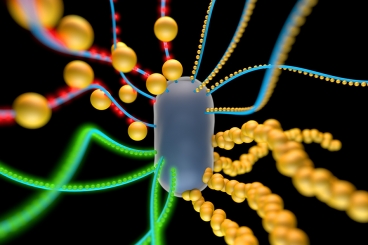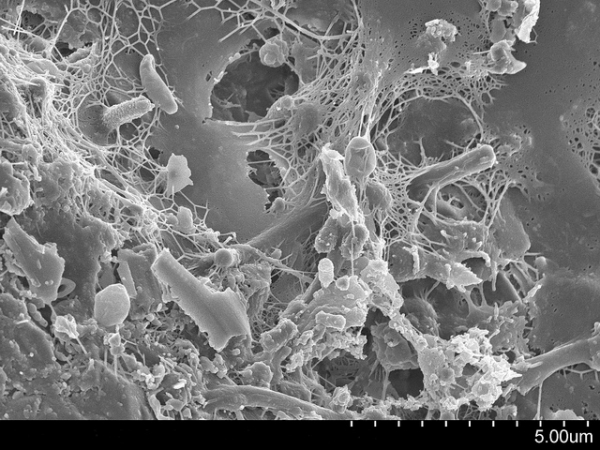Allow me to present the latest wonder from the brilliant minds at MIT: living E. coli cells combined with inanimate cells, like gold nanoparticles—a hybrid “living material” that researchers have used to produce biofilm that can actually attach to other, different nanoparticles.

Essentially, MIT engineers have produced a hybrid material that can respond to its environment, talk to itself, and produce other materials—which have the ability to emit light or conduct electricity.
Their “living material” is a huge step towards designing substances that could be used to create solar cells, diagnostic sensors or even self-healing materials one day, according to electrical engineering assistant professor Timothy Lu.
“Our idea is to put the living and the nonliving worlds together to make hybrid materials that have living cells in them and are functional,” said Lu on MIT Technology News. “It’s an interesting way of thinking about materials synthesis, which is very different from what people do now, which is usually a top-down approach.”
The team chose to experiment with E. coli because it is a bacterium that naturally produces biofilms, ones that contain “curli fibers,” or proteins that help the bacterium attach to surfaces or other particles. By adding peptides into these naturally occurring curli fibers, the engineers were able to incorporate nonliving materials into the biofilms and create their hybrid material.
They modified the curli fibers differently, giving them the ability to attract and attach to different inanimate particles such as gold nanofibers and quantum dots. This, in turn, enabled them to create gold nanowires, conducting
biofilms and tiny crystals with quantum mechanical properties. But the best—and weirdest—part of the team’s creation? It can talk to itself.

Biofilm
“It’s a really simple system but what happens over time is you get curli that’s increasingly labeled by gold particles. It shows that indeed you can make cells that talk to each other and they can change the composition of the material over time,” said Lu.
Basically, the living material is capable of responding naturally to is environment—and generating a material that suits that environment. Lu and the team are hopeful that their creation could soon “emulate natural systems,” like bone growth.
It’s certainly an intriguing new step for the scientific world, and something that’s sure to have many different applications. For more information, you can find the team’s published research in the Nature Materials journal .
Source MIT Tech News, Discovery
Advertisement





